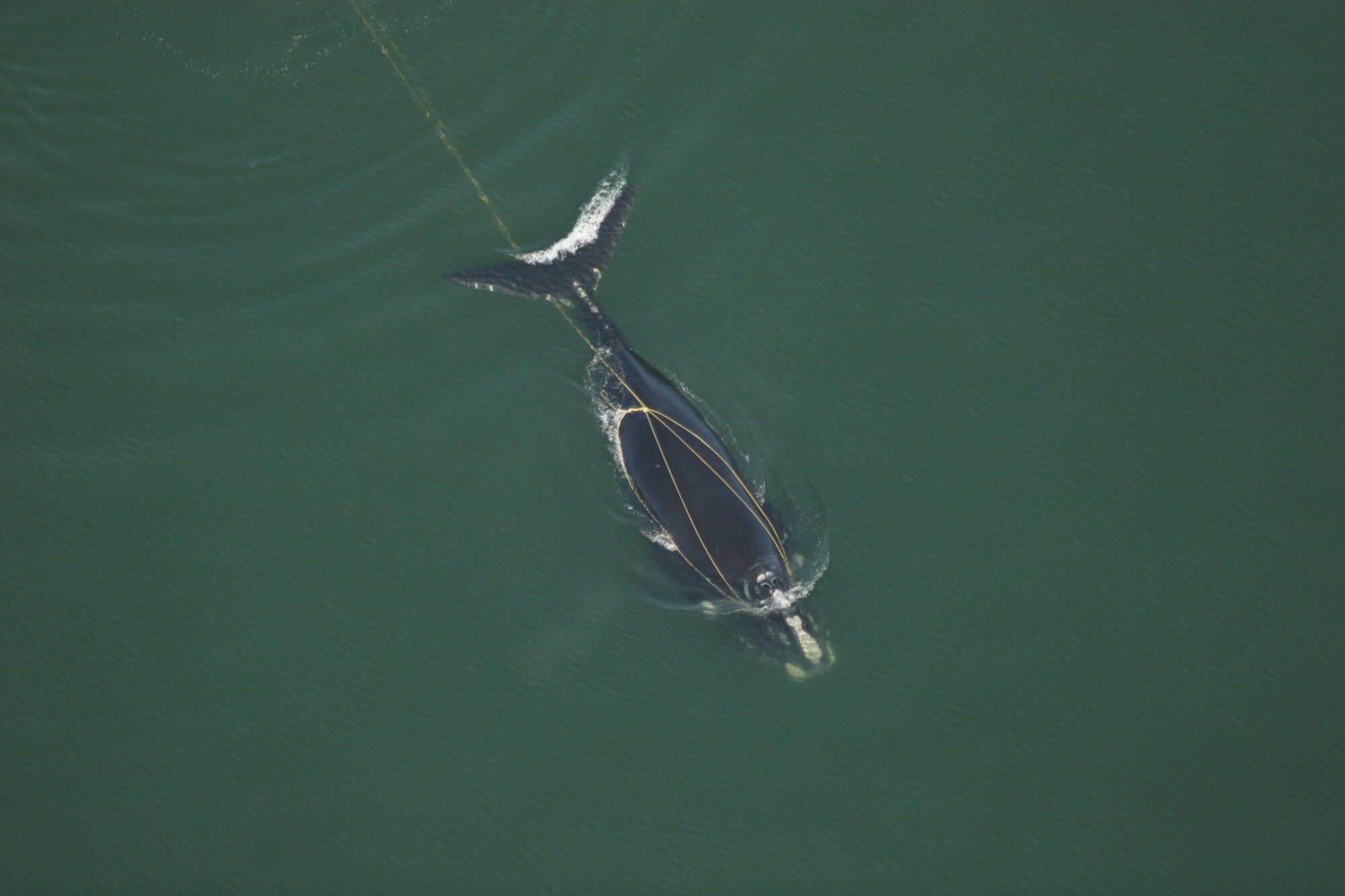We’ve known that North Atlantic right whales are less and less abundant, with a population currently estimated to number fewer than 360 individuals! We now know that they are also smaller and smaller in size. The representatives of this species are estimated to measure on average one metre shorter than they did 40 years ago. This conclusion comes from a collaborative study of 129 right whales, including aerial sighting data and other photographs collected by the National Oceanic and Atmospheric Administration (NOAA), the Woods Hole Oceanographic Institution and the New England Aquarium.
Between 1981 and 2019, the average size of these whales is believed to have decreased by an average of 7%. The results of this study are cause for concern: certain 10-year-old right whales today are approximately the same size as 1- or 2-year-old whales were in the 1980s. In extreme cases, young whales are about two metres shorter than expected.
Entanglements to blame
According to the authors, this stunted growth is attributable to entanglement in fishing gear, which leads to additional energy expenditure. A study of scars in North Atlantic right whales revealed that 86% of all individuals become entangled at least once in their lifetime.
These unfortunate encounters can be fatal. However, even in cases where the incident does not kill the animal, it results in additional energy expenditure, which adversely affects growth and reproduction rates. This exhaustion is also believed to affect the animals’ ability to free themselves from their ropes, their ability to heal and, for females, the quantity and quality of milk they produce for their offspring.
Moreover, the most significant size reductions observed in the study concerned whales that had experienced entanglements or whose mother had gotten herself ensnared while nursing.
A photo illustration compares the body lengths of North Atlantic right whales, including two stunted whales born in 2006 and 2011. The dotted lines show the expected length of right whales of the same age if they had been born in 1981 with no history of entanglements, or entanglements of their mothers. Scarring from an entanglement is visible near the tail in D, an 11-year-old right whale.
Figure design by Madeline Wukusick. Photographs by John Durban, Holly Fearnbach, Michael Moore, Carolyn Miller, Wayne Perryman, and Morgan Lynn, under NMFS research permits #17355 and #21371.
“Entanglements did not explain all of the reduced growth, however, explains NOAA in a press release. Other factors ranging from vessel noise to shifting availability of the tiny copepods that are their primary prey may also be contributing to their declining health.” There are even cumulative effects of these different factors. One thing is for sure: being born and raised in the 1980s was much easier for right whales!
Last year, another research team demonstrated the poor body condition of North Atlantic right whales compared to other right whale species. Clearly, “our” right whales, which live along the eastern coasts of Canada and the United States, have a much smaller girth than their cousins in the Southern Hemisphere. These two elements are testimony to the overall poor health of the population. Numerous measures are currently in place in Canadian waters to limit entanglements, but cohabitation between right whales and the fishing industry remains a challenge.







